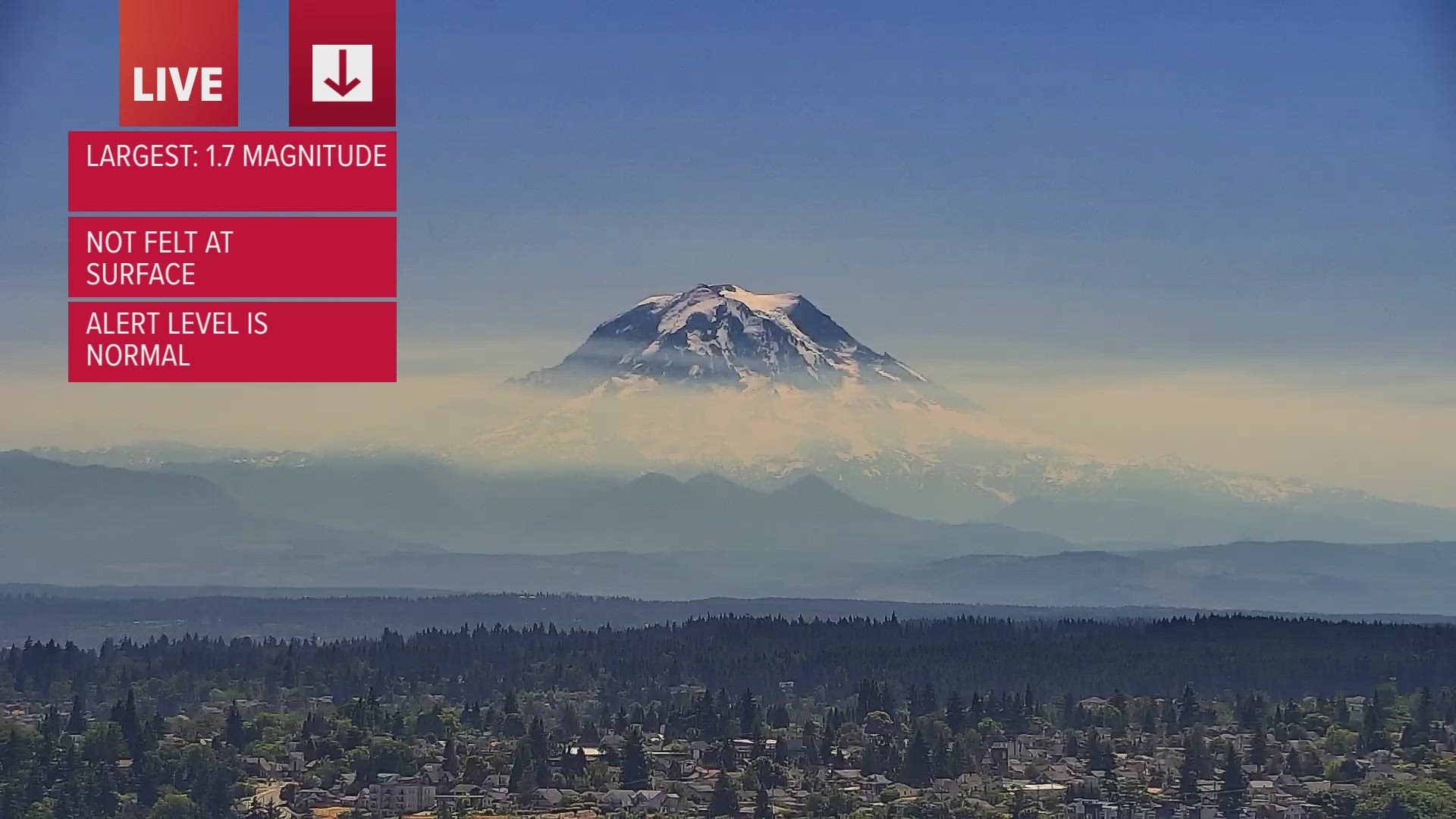WASHINGTON, USA — A "swarm" of small earthquakes near the summit of Mount Rainier Tuesday is no cause for concern, according to local officials.
The United States Geologic Survey (USGS) says the series of earthquakes began around 1:30 a.m. PT, with hundreds having been detected. The largest earthquake so far was just a magnitude 1.7. None of the earthquakes have been felt on the surface, USGS said.
"Currently, there is no indication that the level of earthquake activity is cause for concern, and the alert level and color code for Mount Rainier remain at GREEN / NORMAL," the USGS said in a release Tuesday.
The Pacific Northwest Seismic Network (PNSN) said the earthquakes ranged from depths of 1.2-3.7 miles below the summit of Mount Rainier.
The USGS said swarms typically happen a few times a year but are normally much smaller in the number of events recorded. The last "large swarm" at Mount Rainier was in 2009, with a maximum magnitude of 2.3 and lasting three days.
Both the USGS and PNSN said they are continuing to monitor the seismic activity and will release further updates as the situation warrants.
Earthquakes around western Washington
Many earthquakes in Washington state are linked to the motion of the Juan de Fuca Plate and the North American Continental Plate moving against each other as the Juan de Fuca Plate slips beneath the North American continent, according to PNSN. This is called the Cascadia Subduction Zone.
According to the Washington State Department of Natural Resources (DNR), earthquakes happen in Washington every day, but most are too small to be felt. The state has the second highest risk in the U.S. of experiencing a large and damaging earthquake because of its geologic setting.
The Pacific Northwest typically experiences three types of earthquakes:
- Shallow fault quakes: Ruptures in faults located in the upper 18 miles of the Earth's crust. These earthquakes typically last 20 to 60 seconds and shaking is localized to the area near the fault, according to the DNR.
- Deep earthquakes: Deep faults happen when two tectonic plates collide and one plate slips beneath the other one. These quakes can impact a large area but are less intense.
- Subduction zone earthquakes: This earthquake results from the tension of an oceanic plate slipping beneath a continental plate. When enough stress builds, the fault will rupture, releasing a massive amount of energy. The Cascadia Subduction Zone has the potential for these types of earthquakes and has ruptured in the past. It is one of Washington state's biggest hazards, according to DNR.

